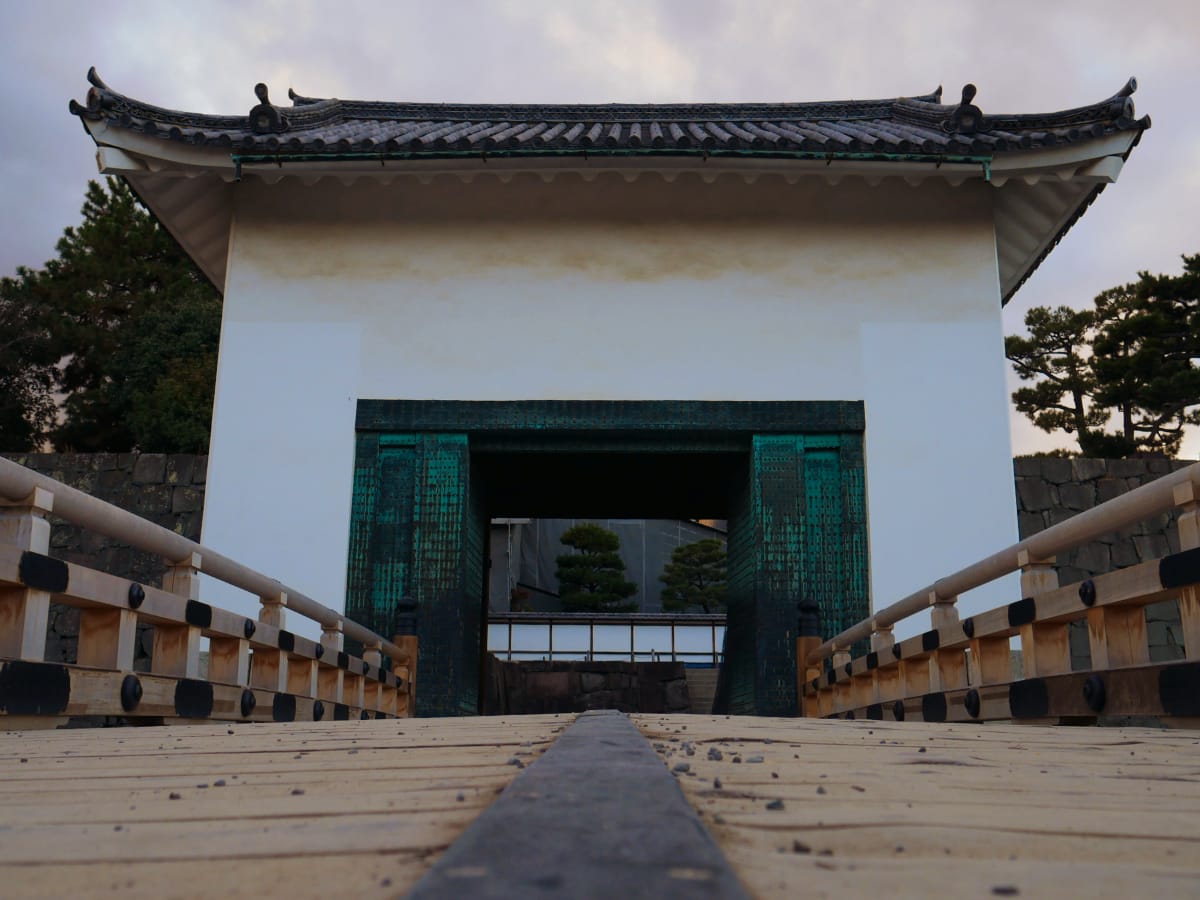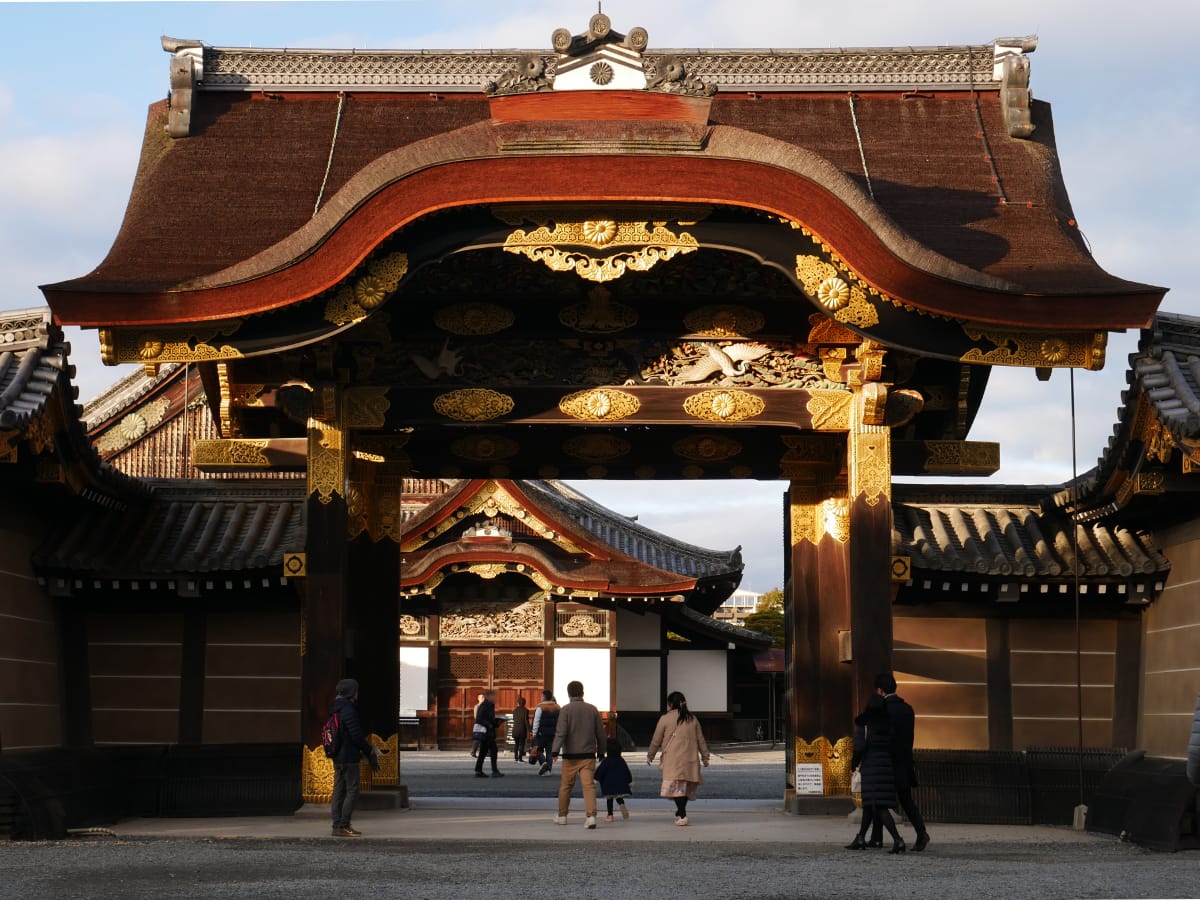After being commissioned in 1603 as the official Kyoto residence of the first Tokugawa Shogun, Ieyasu, Nijo Castle continues to symbolise the power and status of the former shogunate. At a period when the emperor was losing power, the castle was built to remind the citizens of Kyoto and also the emperor where the power truly lay.
Open now to the public as a national treasure, the castle remains one of Japan's best surviving examples of palace architecture from the feudal era.

A symbol of power
The castle took 23 years to build and was completed by Ieyasu’s grandson Iemitsu, who also further expanded the castle by adding a five-story fortress within the walls. The cost of the castle’s construction was paid for by local daimyo, and although it served as the seat of the Tokugawa shogun in Kyoto, it was never used in defense and visits from any shogun after 1640 became rare.
The shogun’s symbol of power was shown through the castle and its immense walls, the double moats, and the large outlooks on the walls. Inside the castle was filled with all the riches, artworks and silkscreens from the most famous artists of the time.
Following the downfall of the Tokugawa government in 1867, the castle was briefly used as an imperial residence, before it was opened to the public. In 1994 the castle became a UNESCO world heritage site.

Within the castle walls today
The castle consists of three main areas; the main circle of defense known as the Honmaru, the secondary circle of defense known as the Ninomaru and the castle’s elegant gardens that are spread around the Honmaru and Ninomaru.
Inside the entrance gate, the first part of the castle's structure that comes into view is the Bansho or Guardhouse. Following the signposted directions, visitors will need to pass through the elaborately decorated Chinese style Karamon gate, leading to the Ninomaru area which houses the Ninomaru palace. This palace is made up of six smaller structures all connected by corridors floored with “nightingale” floors, which squeak when stepped on. The nails of Nightingale floors rub against a clamp which causes chirping noises when pressure is applied. It is speculated that Ieyasu fitted the castle with these floors as a way to detect intruders, although others argue that this isn’t the case, and that the floorboards have simply just become squeaky with age and negligence. There is even a sign in the castle that states the sound is unintentional, either way, the nightingale floors at Nijo is one of the best examples of the device. The Ninomaru Palace is covered with tatami mats and contains more than 2,000 wall paintings, 1,016 of which are designated as Important Cultural Properties by the Japanese Government. Inside the 4th chamber known as the Ohiroma Yon-no-Ma visitors can find elaborate replicas of screen paintings from the artists of the Kano School, which was the largest school of painting in Japan for almost 400 years.
Just Beyond the Ninomaru Palace stretches the Ninomaru garden, which consists of pine trees which are planted in a specific order, an ornamental stone garden and a large pond. The garden was designed by the tea master and landscape architect Kobori Enshu.
After walking through the Ninomaru Garden, visitors will enter into the Honmaru area. The Honmaru area used to house a second palace complex and Iemitsu’s five-story castle keep, but following a fire that broke out in the 18th century, these structures were destroyed and never rebuilt. The current structures in the Honmaru are the Honmaru Palace complex, which was a former imperial residence at Katsura Imperial palace, that was moved to its current location after the fall of the Shogunate. Public viewings of the Honmaru Palace are rare and can become quickly fully booked on special openings. Despite not regularly open to the public, visitors are able to enjoy walking around the gardens and to get a full view of the castle by climbing up the foundation of the former five story castle keep.
Beyond the Honmaru Palace, visitors will be led to the large green gardens that encases both the Ninomaru and Honmaru areas. These gardens are split into different orchards, tea houses, and pathways. The orchards of the castle complex, include over 400 different varieties of cherry and plum blossoms, which means that the blossom season at Nijo castle usually lasts throughout the entire month of April when the grounds become a popular sakura viewing spot.
Getting to Nijo Castle
Nijo Castle can be reached by bus or trains, however, to avoid the overcrowded Kyoto buses, trains may be the preferred method of transport.
From Kyoto station take the Karasuma Subway Line to Karasuma-Oike station, then transfer to the Tozai Line and get off at Nijojo-mae station. Cost: 260 yen. If travelling by bus, get on either the Kyoto City Bus numbers 9, 50 or 101 where you can buy either a 230 yen one-way ticket, or 600 yen full-day bus ticket.
Read more stories from grape Japan.
-- Final Fantasy VII Remake themed cafe to open in Tokyo Skytree
-- Glico brings back sakura and sakura-matcha Pocky flavors for an early taste of spring
-- Try Making the Japanese Ancient Craft Kurumi-E Yourself
- External Link
- https://grapee.jp/en/
 Take our user survey and make your voice heard.
Take our user survey and make your voice heard.















No Comment
Login to comment